Diving in South America is, just like the continent and its cultures themselves, a mix of extremes.
On the one hand, it has always been known as a backpacker’s dream which offers interesting opportunities for divers on a budget.
On the other hand, some of the most incredible yet expensive diving destinations like the Galapagos islands are also located in these parts of the world.
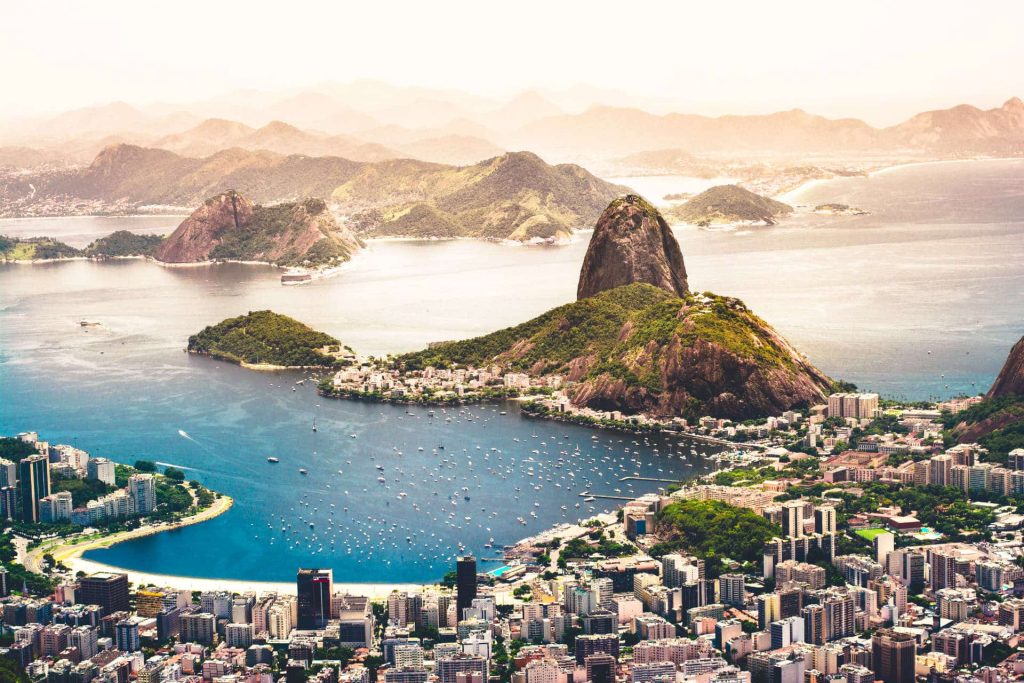
The gigantic Amazon river flows through large parts of this continent which is also home to some of the largest mountain ranges in the world.
To understand the nature of diving and traveling here, let’s first look at the geographical regions in South America individually.
There are 5 different regions in South America which is bordered by the Atlantic Ocean on the East, as well as the Pacific Ocean in the West:
- Northern Hemisphere
- Equator – Tropic of Capricorn
- South of the tropic of Capricorn
- Dependencies & islands
Northern Hemisphere
Venezuela, Guyana, French Guiana, Suriname, and nearly all of Colombia are the only continental South American countries in the Northern Hemisphere north of the equator. The weather here is mostly wet and humid.
The Isthmus of Panama separates the southern part of Central America and South America, with the Darién Mountains as the most visible divider.
Diving in these parts is only really possible in Colombia, as the other countries are usually plagued by civil unrest and safety concerns.
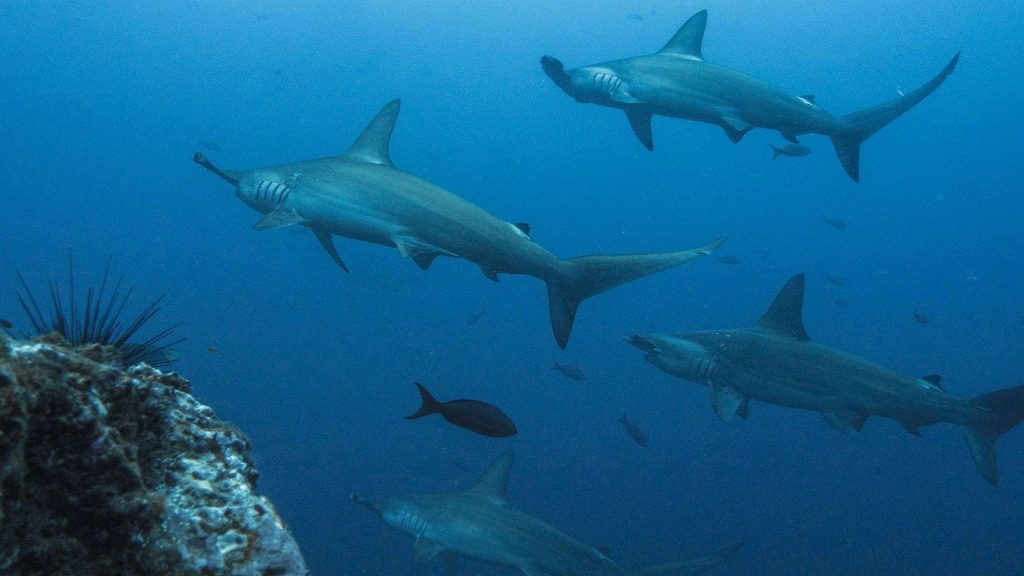
Colombia touches both the Pacific and the Caribbean Sea which offers two very distinct diving environments. It is also home to the world’s third-largest reef. Taganga is a backpacker hotspot, as well as great for scuba diving in warm water.
In addition, the country is mostly known for its islands such as Malpelo Island, San Andrés, Providencia, and Santa Catalina.
Bogota and Medelin are two of the most popular travel destinations in the world, making Colombia a traveler’s and scuba diver’s dream!
Equator – Tropic of Capricorn
South of the Equator lie the majority of Ecuador, Peru, Bolivia, Paraguay, and the largest country in South America Brazil.
Ecuador is a popular travel destination and offers a variety of environments. In the East, the Amazon rainforest spans vast areas, most of which are protected. In the West, it has a 2,337km (1,452mi) long coastline along the Pacific Ocean with a tropical climate and severe rain seasons.
Both parts are divided by the so-called Sierra, the Andean and Interandean highland provinces with Chimborazo and the active volcano Cotopaxi as its highest points at 6,310m (20,697 ft) and 5,911m (19,388 ft) elevation, respectively.
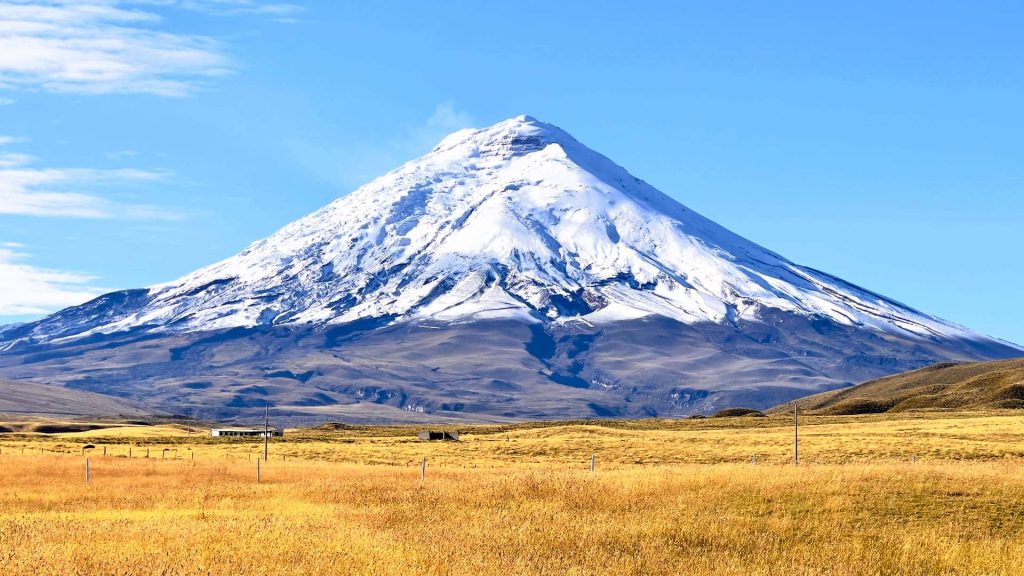
Scuba diving in Ecuador is mostly famous for its Galapagos islands, one of the best dive spots in the world, but the country itself is always worth a visit. You can encounter giant manta rays here all year round off the coast of Manabí.
Equally as diverse is Peru, the third-largest country in South America.
Peru is another travel destination that’s on everyone’s bucket list it seems, and for good reasons. From the Andres mountain ranges to the ruins of Machu Pichu, or the Amazon forest, the country is much too diverse to be described in just a few paragraphs.
For scuba divers, Peru has a lot to offer and if you are here, make sure to plan in a few days to explore the country’s Pacific coast.
Massive kelp forests, diving and snorkeling with sea lions, and more than 1,000 species of fish await you. Diving in Peru is a bit colder than in other places in South America and the visibility is a little lower.
Lake Titicaca in the Andes mountains is the largest lake in South America and would arguably be one of the best altitude diving sites in the world…if diving were allowed here. Once this changes, we will update this guide!
On the other side of the continent, the massive country of Brazil boasts 7,491 km (4,655 mi) of coastline
While the country is of course famous for many things like the gigantic rain forests, the carnival at the Copacabana, and a soccer-crazy population, the diving opportunities are relatively unknown to most.
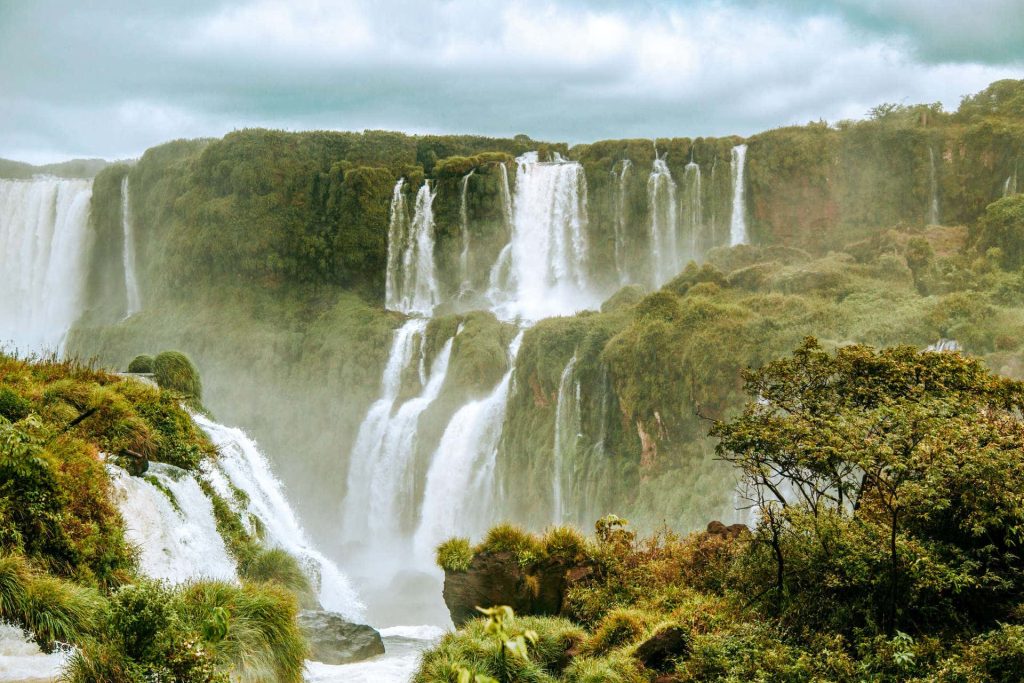
You can find the best diving in Brazil at the UNESCO World Heritage site in Fernando de Noronha Marine Park. Spinner dolphins, intact coral reefs, and lots of fish make this place great for scuba divers.
Arraial do Cabo by Rio de Janeiro offers caves, wrecks, and beginner-friendly dive sites with great visibility. There are also plenty of islands and archipelagos to explore off the coast.
South of the tropic of Capricorn
South of the tropic of Capricorn, Chile, Argentina, and Uruguay are located. This part of South America has the highest GDP per capita and is the most industrialized.
As such, the infrastructure is much better, including public transport, cellphone service, and English-speaking population.
Chile is the southernmost country in the world and closest to Antarctica. In fact, the country claims a large territory here, although it is unoccupied.
As it stretches 4,300km (2,670 mi) from North to South, you will find a variety of climates in Chile. Deserts, glaciers, tundra, and subtropical zones can be found.
Scuba diving in Chile is diverse but not super-evolved, yet. This means, there are not yet many dive centers but also not many other divers here.
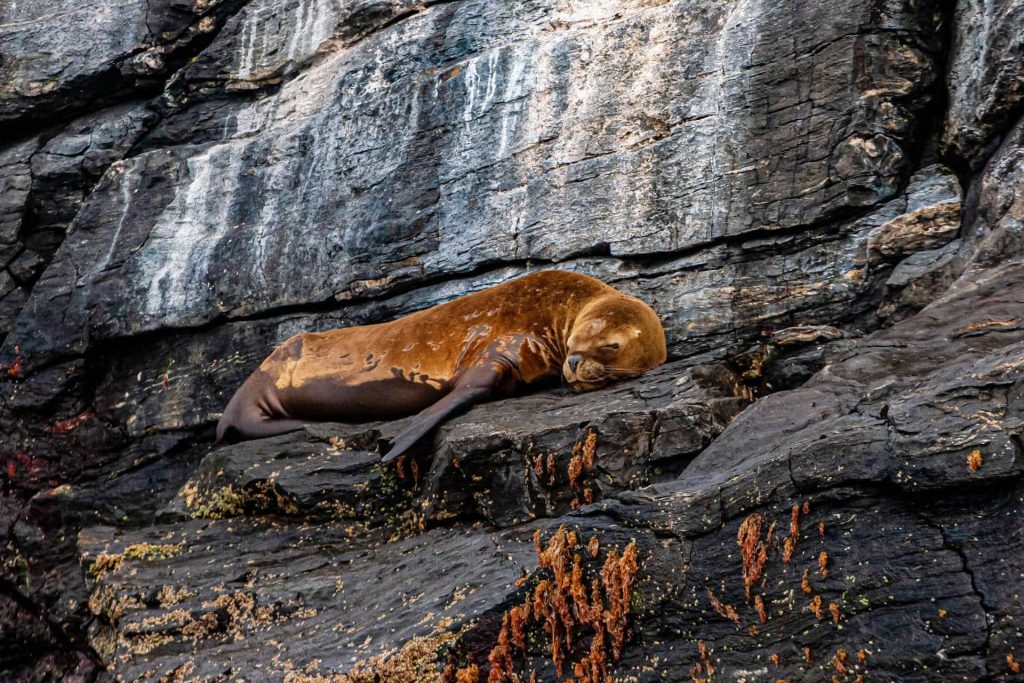
The Humboldt Current, one of the most nutrient-rich and diverse marine ecosystems in the world, runs along nearly the entire coast of Chile which also supplies Cocos Islands and the Galapagos Islands. It is one reason why diving in South America is so exciting.
The water is mostly cold, and you will need a thicker wetsuit or even drysuit to dive in the most Southern parts of the country, but it is well worth it. Healthy soft corals, schools of fish, critters, seals, sea lions, as well as sharks and dolphins are common sights in these waters.
Besides scuba diving, Chile is an exciting country to visit, and a popular destination for exchange students from around the world.
Last but not least, Argentina is an incredible travel destination for countless reasons. It features quite literally every climate and environment imaginable. Deserts, mountain ranges, glaciers, rainforests, grasslands, subtropical beaches, and polar regions…the list goes on.
The capital Buenos Aires on the Atlantic coast is in the top 15 of the world’s largest cities in 2025 and worth a trip by itself.
The prettiest area in Argentina is arguably Patagonia in the South, which the country shares with Chile, which also has the highest biodiversity.
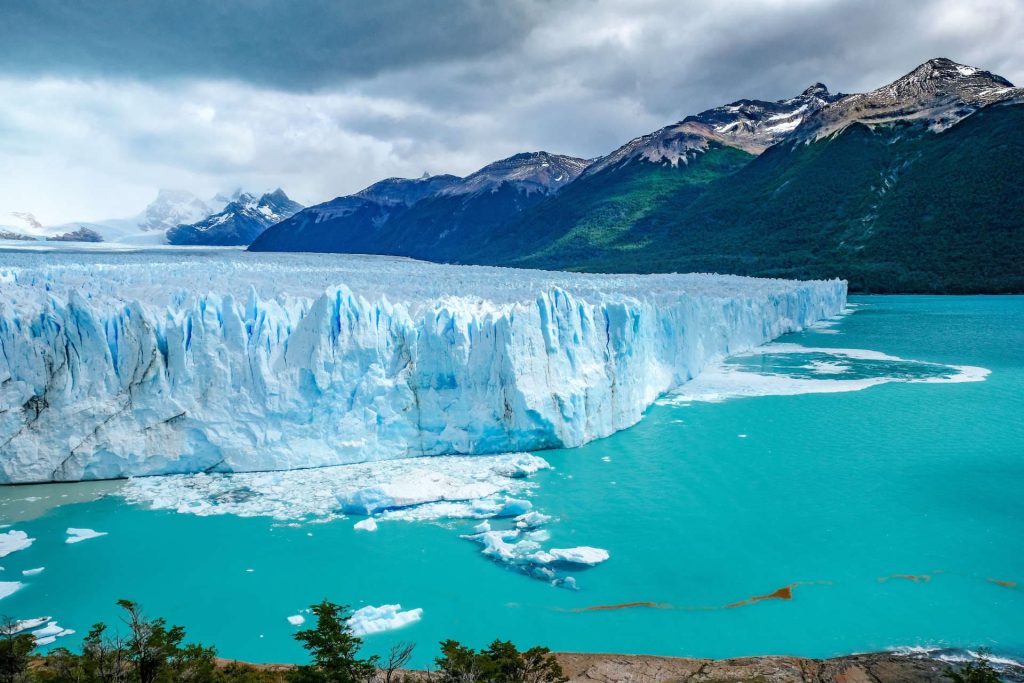
Scuba diving in Argentina is just as exciting and incredible diversity awaits. Southern Right whales, elephant seals, sea lions, and penguins are just some of the country’s marine inhabitants.
Check out Peninsula Valdes, Tierra de Fuego, and the cold waters of Ushuaia for some great diving opportunities.
Incredible diversity awaits you whilst diving in Argentina. From the cold waters of Ushuaia and Tierra de Fuego to the abundant sea lions and elephant seals of Peninsula Valdes, it’s a feast for the senses right across this gorgeous country.
Moreover, Ushuaia is the starting point for most expeditions and liveaboard trips to Antarctica. Even if this is not on your list right now, diving here is great also for freedivers and snorkelers, and the Monte Cervantes shipwreck is a must-see dive site!
Dependencies & islands
The region of South America includes a number of dependencies, islands, and off-shore territories.
The Falkland Islands (UK) in the far South, Galapagos Islands (Ecuador), Isla San Felix & Isla San Ambrosia (Chile), and Ascension Island (UK) are always counted in.
In addition, South Georgia and the South Sandwich Islands (UK) are often included, although they technically belong to the Antarctic region already.
The Galapagos Islands, a UNESCO World Heritage Site, are one of the best dive spots in the world, and also one of the greatest liveaboard diving destinations.
Hammerhead sharks, whales, manta rays, sea lions, and penguins live in these waters which are filled with life. Besides being a scuba diver’s dream, the islands are also great for land-based exploration.
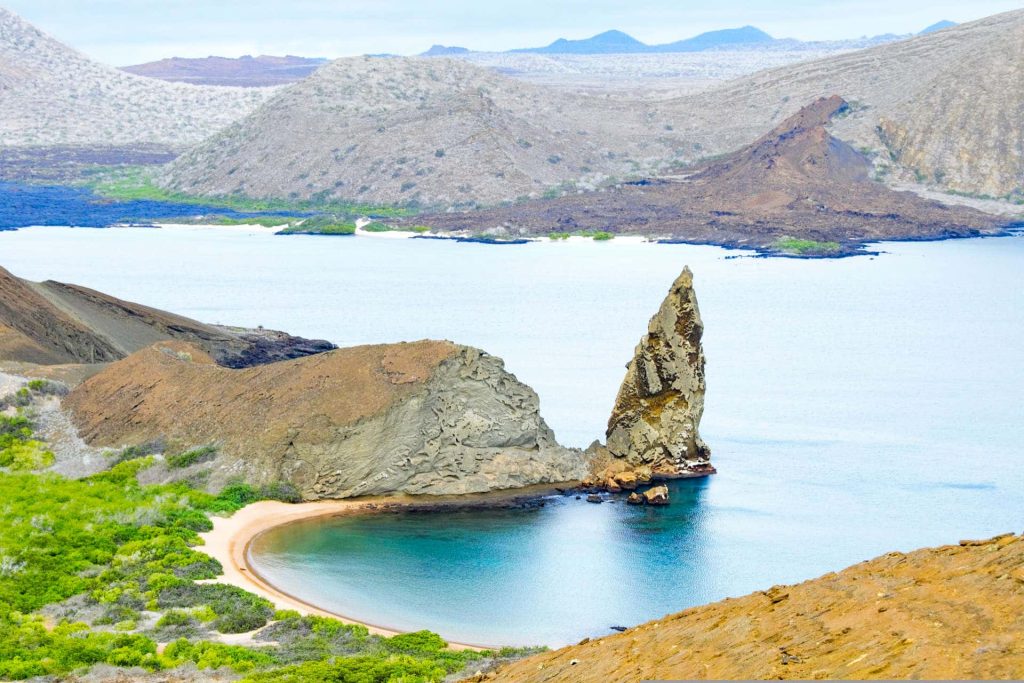
Giant Galapagos tortoise, land iguana, marine iguana, Darwin Finch, blue-footed booby, sealion, Galapagos penguin, lots of bird species, and more are part of the diverse wildlife.
The Falkland Islands, another British Overseas territory, are a collection of small islands off the coast of Argentina with spectacular mountain views, icebergs, and glaciers. Wildlife photographers will love the abundance of animals here, and there is also lots to see underwater.
Hundreds of wrecks, penguins, seals, Commersons dolphins, lobsters, and more await.
What makes diving in the Falkland Islands special is that there are no(!) commercial dive centers, nor places that rent out equipment.
However, if you plan to travel here, contact the Falkland Islands Tourist Board and they will connect you to the local marine survey groups that can organize something for you. Speaking of adventure travel!
The best diving destinations in South America
Here are the best diving destinations in South America you absolutely should check out for your next vacation:
Galapagos Islands, Ecuador
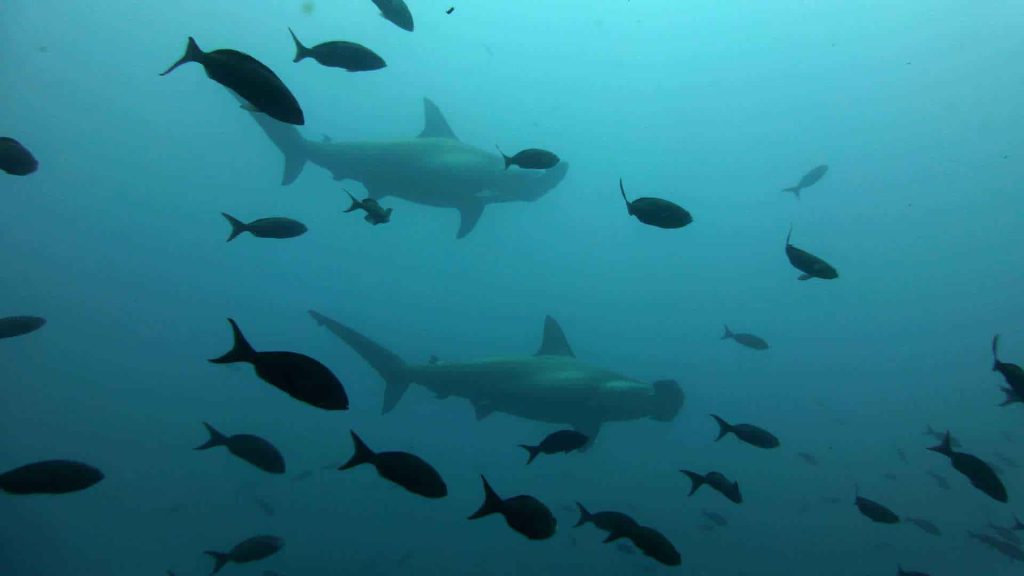
The Galapagos Islands are one of the best dive spots in the world, and among the best in South America.
The nutrient-rich Humboldt Stream supplies the islands with plankton which draws in lots of marine life.
Diving here means diving with large pelagics like sharks, whale sharks, whales, manta rays and more. Hammerhead sharks are the main attraction and they roam these waters in the hundreds.
Water temperatures vary quite a bit, depending on the seasons, and the waters here are rough.
If you are not yet an experienced diver, maybe postpone your trip here until you have at least 50-100 dives and pick another destination for scuba diving in South America first!
| Diving Season | Year-round |
| Best time to dive | May is usually the best time to dive in Galapagos. Whale Shark Season (June-November) and Manta Season (December-May) which is warmer. |
| What to see | Whale sharks, manta rays, whales, sharks, seals, and dolphins. Sightings depend on the season. |
| Water Temperature | June-November: ~16-24ºC (60-75°F), December-May: ~21-30ºC (70-86°F) |
| Budget | $$$ |
| Best for | Hammerhead sharks, whale sharks |
| Difficulty | Advanced. Rather cold waters, currents, choppy water, and rough conditions. Many blue water descents. |
Book your trip
Malpelo Island, Colombia
Malpelo Island in Colombia is one of the best dive spots in South America and popular among divers around the world.
The island is essentially a volcanic rock and a highly-frequented cleaning station for sharks, giant oceanic manta rays, and whale sharks.
Large schools of scalloped hammerhead sharks roam the waters around it. Schools of up to 200(!) sharks can be encountered who are often accompanied by even larger groups of silky sharks.
Water temperatures can reach up to 28°C (82°F) during the summer but drop significantly in the winter. The plankton-rich times also cause a bit of a visibility drop but in turn, draw in more pelagic sightings.
Diving around Malpelo Island is a little advanced with mostly steep walls and strong winds. Therefore, an Advanced Open Water Diver certification, in addition to at least 30-50 dives is recommended.
| Diving Season | Year-round |
| Best time to dive | April – October for the highest water temperatures |
| What to see | Hammerhead sharks, silky sharks, whale sharks, manta rays, whales, seals |
| Water Temperature | April-October: ~26-28°C (79-82°F), November-March: ~16-25°C (61-77°F) |
| Budget | $$$ |
| Best for | Hammerhead sharks, whale sharks |
| Difficulty | Advanced. Rather cold waters, currents, choppy water, and strong winds. Steep cliffs |
Book your trip
Falkland Islands
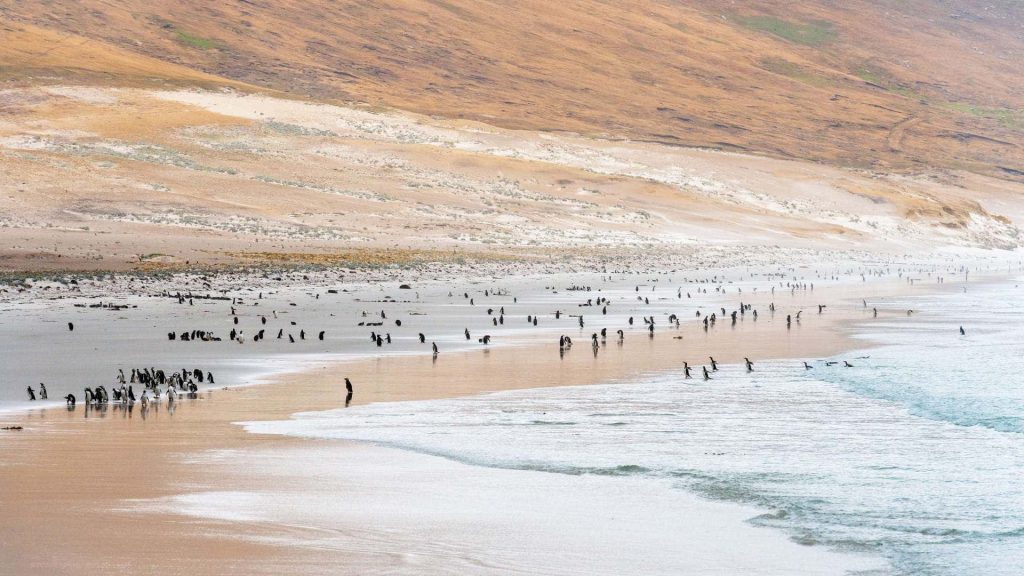
The Falkland Islands are among our favorite diving destinations ever, mainly for the fact that…they are not really a diving destination.
No dive centers, filling stations, shops, or liveaboards can be found on the islands, and there is virtually no commercial scuba diving industry here.
But this is exactly what makes it so exciting. Wherever you dive, you are truly an explorer and you might be the one who finds the next diving hotspot!
Lots of species that are only native to this region can be found around the islands and Commerson’s dolphins are our favorite among them.
Diving can only be done with local groups like the Shallow Marine Service Group.
| Diving Season | Year-round |
| Best time to dive | Anytime |
| What to see | Seals, native dolphins, critters. |
| Water Temperature | Below 10°C (50°F) year-round |
| Budget | $$ |
| Best for | Research Diving |
| Difficulty | Easy but not super warm. Lots of exploration! |
Book your trip
Chile
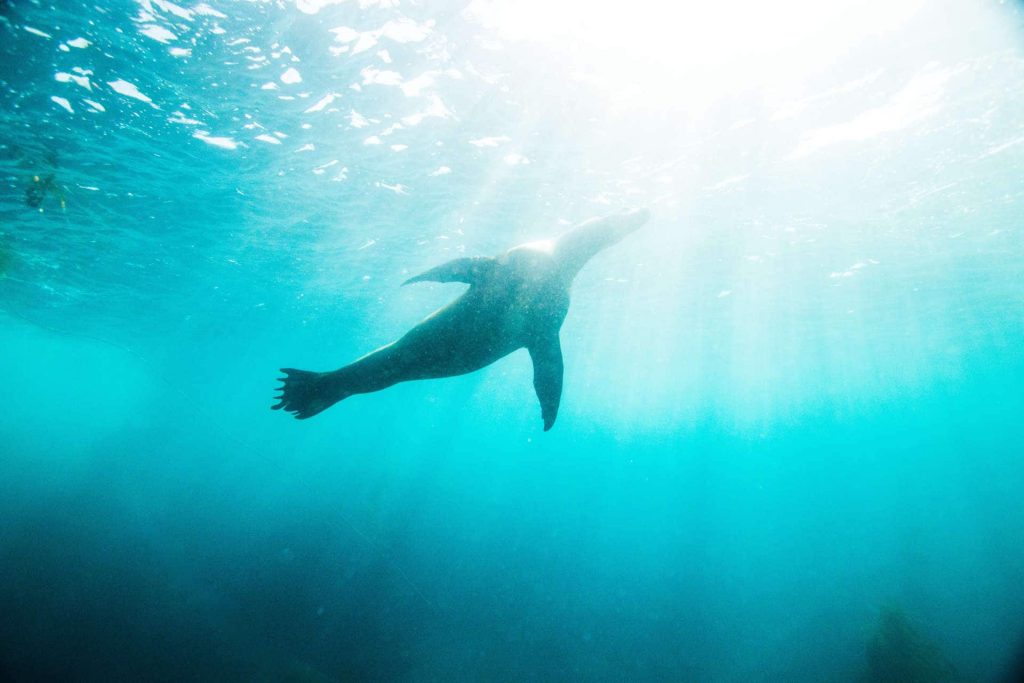
Scuba diving in Chile is diverse but not super-evolved, yet. Hence, you can enjoy private diving at many places, if you can find a dive center.
The Pacific coast of Chile is dominated by the Humboldt Current, one of the most nutrient-rich and diverse marine ecosystems in the world that runs from South to North.
The South of Chile is a premier destination for diving with sea lions and whales in cold water and definitely worth a visit!
Antofagasta, La Sarena, and the Juan-Fernandez-Archipelago are the scuba diving hotspots in Chile.
Healthy soft corals, schools of fish, critters, seals, sea lions, as well as sharks and dolphins are common sights in these waters.
Easter Island is a territory of Chile worth visiting but geographically belonging to Oceania.
| Diving Season | Year-round |
| Best time to dive | December – March |
| What to see | Healthy soft corals, schools of fish, critters, seals, sea lions, dolphins, sharks |
| Water Temperature | December – March: ~8-24ºC (70°F), April-November: ~6-22ºC (42-71°F) |
| Budget | $$$ |
| Best for | Sea lions, great visibility |
| Difficulty | Beginner-Advanced. Very cold waters in the Southern regions. |
Book your trip
Brazil
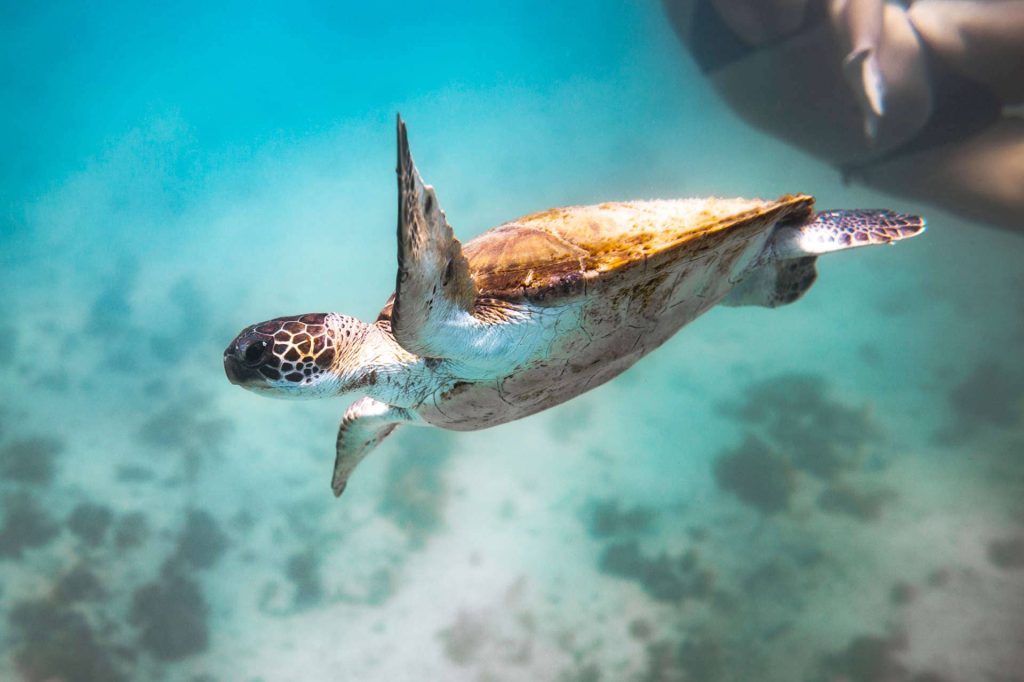
Unlike the country’s rain forests, its underwater world is largely industrialized, offering pristine diving conditions and opportunities.
Fernando de Noronha Marine Park is Brazil’s number one dive site where you can encounter spinner dolphins, intact coral reefs, and lots of fish
Arraial do Cabo by Rio de Janeiro offers caves, wrecks, and beginner-friendly dive sites with great visibility.
Laje De Santos, the Abrolhos Archipelago Islands, and the Arvoredo Islands are some of the places you should check out that are a little farther off the coast and can only be reached by boat.
Wreck divers will like the 90m long Victory 8B wreck, as well as Recife where you can find 15 shipwrecks that can be dived.
Water temperatures are pretty high year-round with some deviations during the winter months April to November.
| Diving Season | Year-round |
| Best time to dive | December – March, June – September |
| What to see | Spinner dolphins, turtles, reefs, wrecks, lots of fish, warm water |
| Water Temperature | December – March: ~22 – 28 ºC (71-83°F), April-November: ~16-24ºC (62-75°F) |
| Budget | $$ |
| Best for | Healthy coral reefs, wrecks |
| Difficulty | Easy diving mostly. |
Book your trip
Peru
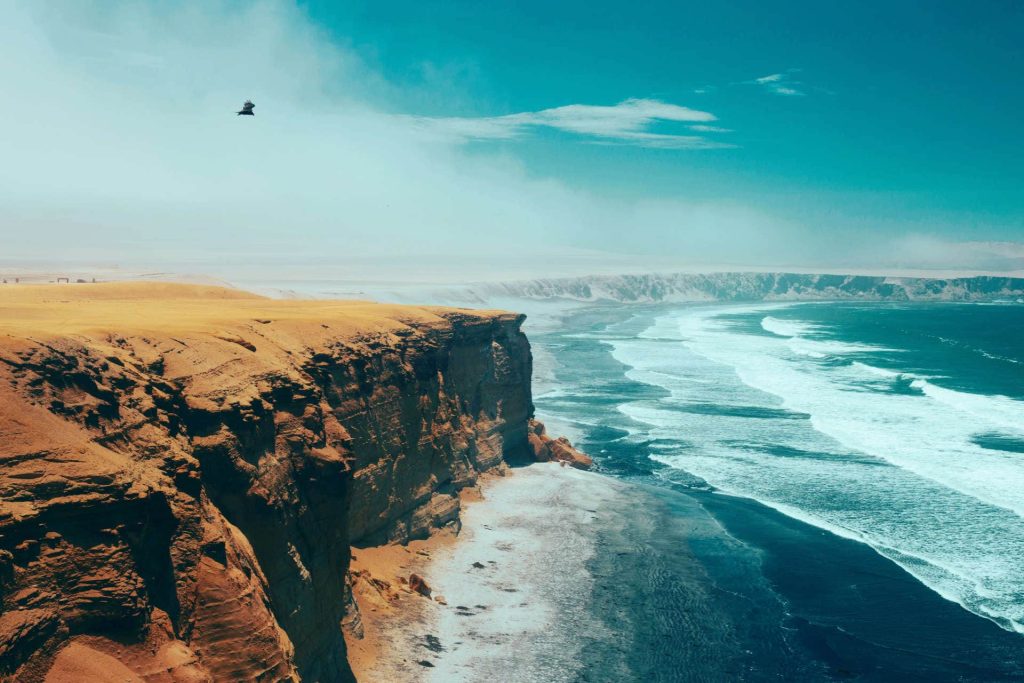
Peru is an exciting country to visit that also offers superb diving. Its large kelp forests are a heaven for marine life enthusiasts and should be high on your bucket list.
You can encounter sea lions, seals, penguins, more than 1,000 species of fish, and more in these waters.
Snorkelers will want to visit La Gurta de los Osos where you can also encounter sea lions.
Other popular scuba diving sites in Peru include La Corona de Diable, as well as La Roca de Pinaculo, or the Palomino islands.
You can even rent a boat on your own for less than $50 a day to explore on your own, granted, you first filled your tanks with a local dive center.
Please be aware that the waters along the coast of Peru are pretty cool in comparison to some more Northern countries like Mexico and you will want to bring a thicker wetsuit.
The visibility is also not the greatest, however, this is caused by all the plankton in the Humboldt Current which leads to more marine life.
| Diving Season | Year-round |
| Best time to dive | December – April |
| What to see | Sea lions, seals, lots of fish, penguins |
| Water Temperature | 14-22ºC (58-72°F) |
| Budget | $$ |
| Best for | Private diving on your own |
| Difficulty | Medium. Cold water, lower visibility |
Book your trip
Argentina
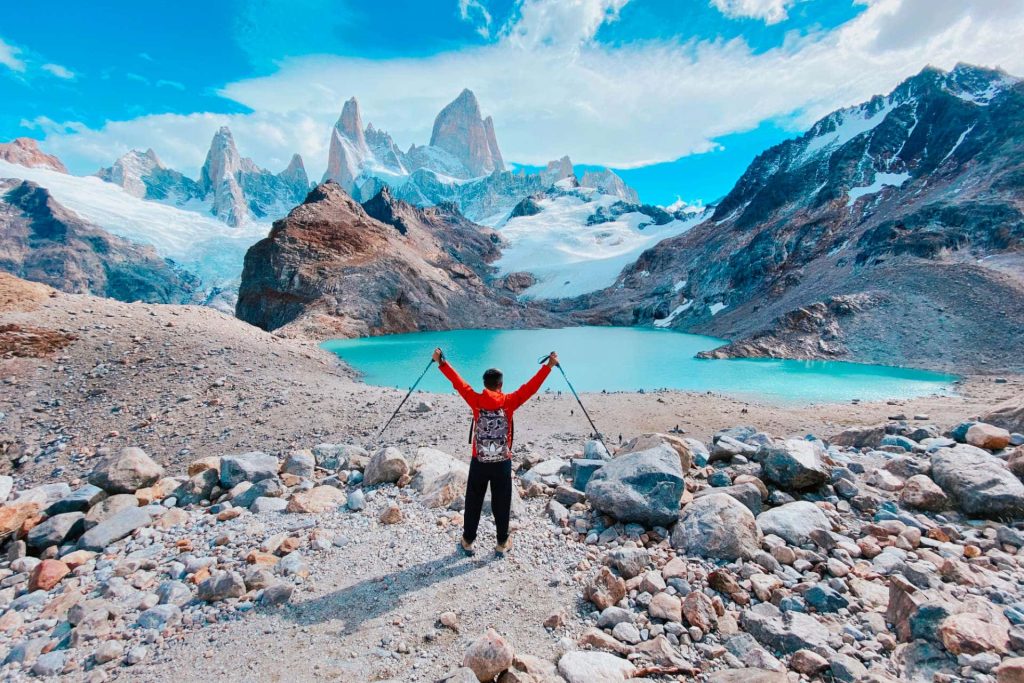
Argentina offers something for everyone, no matter if you like scuba diving, freediving, snorkeling, sightseeing, outdoor sports, or just want to enjoy nature.
Scuba diving in Argentina is just as exciting and incredible diversity awaits. Southern Right whales, elephant seals, sea lions, and penguins are just some of the country’s marine inhabitants.
Check out Peninsula Valdes, Tierra de Fuego, and the cold waters of Ushuaia for some great diving opportunities.
Incredible diversity awaits you whilst diving in Argentina. From the cold waters of Ushuaia and Tierra de Fuego to the abundant sea lions and elephant seals of Peninsula Valdes, it’s a feast for the senses right across this gorgeous country.
Orcas are also a common in these waters, although less frequently encountered while scuba diving.
Due to the diverse nature of environments in Argentina, water temperatures range from very warm to super cold. A drysuit is required in Ushuaia, for example, while further North you will get by with a 5mm wetsuit.
Visibility-wise and for better diving conditions, visit in the Southern Hemisphere winter between May and November as fewer plankton will be in the water.
There are no liveaboards operating in Argentina, however, Ushuaia is the starting point for nearly all Antarctica expeditions!
| Diving Season | Year-round |
| Best time to dive | May – November |
| What to see | Orcas, Southern Right whales, sea lions, elephant seals, penguins, |
| Water Temperature | 4-22ºC (40-72°F) |
| Budget | $$$ |
| Best for | Large biodiversity. |
| Difficulty | Any level of diving available. Be aware of cold water! |
Book your trip